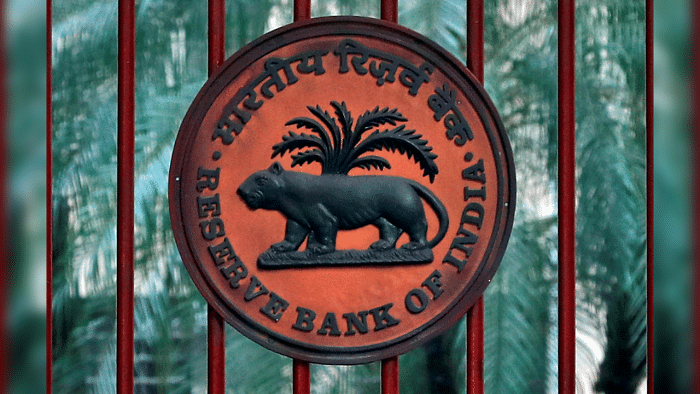
The RBI’s Monetary Policy Committee in its December meeting decided to maintain its policy rates – Repo at 4 per cent and reverse Repo at 3.35 per cent — as it sought to focus on economic growth. The primary goal of the MPC is price stability, with the target of 4 per cent annual inflation rate, with a plus or minus margin of 2 per cent.
Though the new Omicron variant of the coronavirus is of major concern, experts have comforting words that a more rapid coverage of the population with two doses of vaccine would reduce severity of any infection; and an additional booster shot for the elderly, the usual masking, social distancing and other precautions should be adequate. What is feared even more is the impact of faster normalisation of monetary policy in the advanced countries, with a rise in interest rates. In the US, supply disruption and shortage issues and rise in rents and wages have pushed inflation from 5.4 per cent in June to 6.8 per cent in November. In the Euro zone, Germany registered the highest inflation since 1997 at 6 per cent in November. In both US and Europe, the targeted rate of inflation is 2 per cent.
Any delay by the RBI to adjust to the new external conditions will spell disaster in terms of outflow of capital in response to widening interest rate differentials as well as loss of credibility in RBI’s approach to price stability as its primary objective. Macro-economic factors matter. The risk-loving foreign institutional and portfolio investment funds seek higher returns with predictable stability. They tend to move in and out at the click of a mouse. Depreciation of the rupee renders essential imports, including petroleum crude, more expensive.
The RBI wanted the economy to be prepared for the likely monetary tightening. By absorbing surplus liquidity through variable rate reverse repo auctions, the RBI plans to drain Rs 9 lakh crore out by end-2022, hoping that eventually the overnight rate will begin to rise and get close to the Repo rate, amounting to normalisation.
The RBI’s decision was based on the assumption that consumer price index (CPI) and wholesale price index (WPI) inflation, which were due to high retail prices of petrol and diesel, would fall in November, following the cuts in central excise as well as in VAT by some states. Other assumptions were supply incentives and seasonal corrections in prices of winter vegetables and fruits would help.
November CPI and WPI inflation figures, released on December 13-14, just after the MPC met, were a shock. The CPI inflation was up at 4.91 per cent, rising from 4.52 per cent in October and 4.40 per cent in September, though still within permissible margin. On the other hand, WPI inflation was in double digits at 14.23 per cent. The MPC relied on three weeks-old inflation data of November 13. Will RBI discontinue the practice of holding the bi-monthly MPC meeting in the first week of the month and conduct it after the 15th of the month?
Inflation new ‘pandemic’
Tobias Adrian and Gita Gopinath of the IMF observed last week that in the context of supply-demand imbalances, continuing a monetary policy stance aimed at supporting recovery could fuel substantial and persistent inflationary pressures. Their advice is that in countries where economic recovery is underway with rising inflationary pressures, it would be necessary to accelerate the normalisation of monetary policy.
The US Federal Reserve is set to chart a path of higher interest rates. Its rate-setting committee will soon end its bond-buying programme to let interest rates rise from the near-zero level held since March 2020, causing jitters to capital markets.
Last week, the rupee ended at an 18-month low at Rs 75.78, as FII/FPIs turned net sellers of equities worth Rs 1,092 crore. This also added to the rupee’s weakness as the dollar strengthened on expectation that the US Fed might hike interest rate. The hawkishness of the US Fed and the continuing dovishness of RBI will contribute to further weakening of the rupee. Increases in telecom rates, a hike in GST rate on clothing and footwear are all ready to push the CPI inflation to around 6 per cent in December.
Now, we have another bad news: It is the trade gap in November, $22.9 billion, the highest in two decades. Weak macroeconomic fundamentals erode confidence, leading to pulling out of capital, aggravating herd mentality. On Wednesday, the rupee weakened past Rs 76/$.
On Thursday, the Bank of England became the first to raise interest rate. It raised its Bank Rate to 0.25 per cent from 0.1 per cent. Governor Bailey observed that though Omicron was already hurting the economy, BoE is compelled to “stop the recent jump in prices from becoming a longer-term problem”. The choice is between growth and price stability.
RBI has to restore credibility. Price stability is the primary goal. It is time to act now. A symbolic Repo rate increase by at least 10-15 bps?
(The writer is a Honorary Adjunct Professor at Amrita School of Business, Bengaluru Campus)